
HST And LST Techniques For Training Your Cannabis Plants
Training cannabis can improve overall performance and yields. High-stress training and low-stress training are two styles of manipulating marijuana for better results indoors and outdoors. Find out more about the different techniques below.
Applying training techniques to the cannabis plant can improve end yields considerably. From knee-high, meticulously tied down autoflowering varieties to 3-metre-tall outdoor trees controlled with large trellises, training cannabis works.
What is the best way to go about training cannabis for improved performance? Well, first a shout out to the cannabis plant itself. Virulence is a feature of cannabis that is never strain-dependent. Revisiting a big outdoor plant that was previously ravaged by grasshoppers, only to find it now smothered in healthy regrowth, testifies to the hardy nature of cannabis.
TRAINING YOUR CANNABIS PLANTS: LST VS. HST
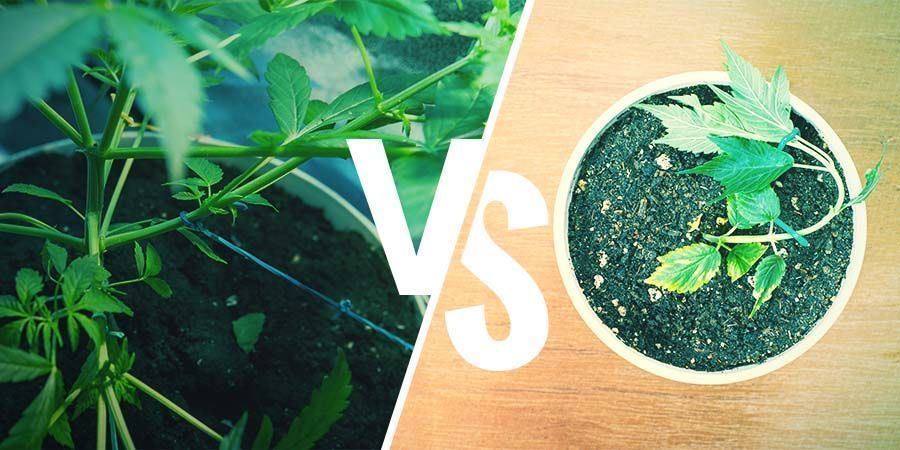
Despite its natural vigour, a bit of loving torture can get a very positive response from cannabis in a number of ways. At its simplest, low-stress training or LST exposes as much of the leaf surfaces to light during vegetation as practical; then, during flowering, as much bud surface as possible. Indoors or outdoors, where direct light strikes, optimal plant growth occurs. As suggested by its name, LST techniques are less harsh on plants, usually only slightly lengthening total grow time.
High-stress training or HST methods can seem traumatic and counterproductive, but administering controlled stress to plants can stimulate very strong growth in response. In a purely practical sense, training can also save space; many strains can get out of control quickly if not managed. HST can extend the grow period significantly depending on which methods are used, and how often. After all, the plant requires time to redistribute growth hormone to relevant parts of the plant.
There is no singular preferred training method when it comes to marijuana. It isn’t so much that one method is better than another, only which proven method, whichever it may be, suits your particular situation. Weed loves the sometimes counterintuitive attention, rewarding the grower with lots of that dankness we all enjoy so much.
LST: LOW-STRESS TRAINING TECHNIQUES
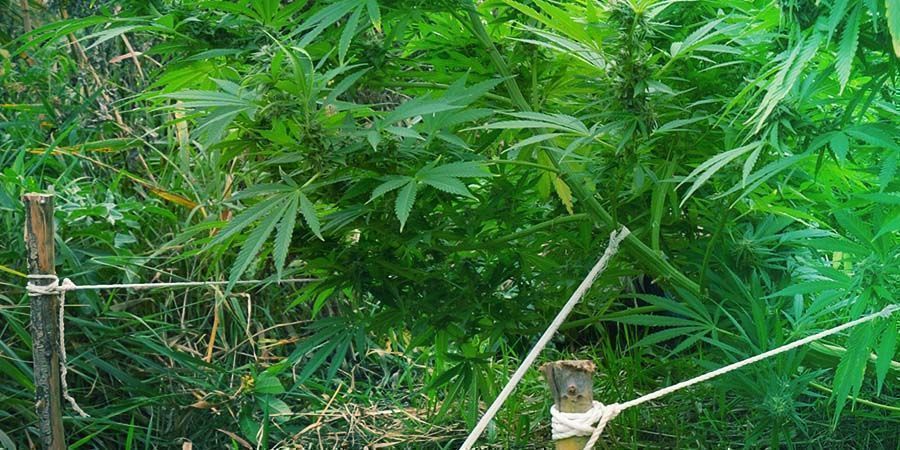
SIMPLE LST
For the grower who doesn’t have too much time, or the beginner who wants to understand the basic nature of the cannabis plant, bending a young plant to lay horizontally to continue growth is LST at its most basic. All the side branches will grow to a similar height, and the main cola will bend around to join the new canopy.
Taking things a step further, all new growth can then be tied down as close to flat as possible. This interrupts the apically dominant nature of cannabis, promoting equal growth at all nodes. Similarly, during flowering, buds will be homogeneous in size, rather than featuring a dominant cola with smaller satellite flowers. Plants end up being flat and broad, and take up little volume while making the most of the light footprint.
SUPERCROPPING
Outdoor growers know that mild damage caused to cannabis plants during storms can bring on a spectacular recuperation. Twisted branches and bent colas right themselves and visibly strive towards the sun.
Supercropping indoor crops mimics this kind of gentle damage. Physically bending the ends of upper branches to 90° has two effects. The lower buds can grow larger in more light, increasing overall bud volume. Plus, the bent buds respond with more vigour as the plant rushes to repair the damage.
Holding the chosen branch between thumb and forefinger, apply slight pressure and roll the branch backwards and forwards. When the stalk softens, gently bend it horizontally. No snapping, just a firm encouragement. An impressive knuckle of scar tissue will form in a few days.
SCREEN OF GREEN
Screen of green or ScrOG is low-stress training taken to the max. Early topping and training produces very bushy plants. A metal or plastic screen is fitted at canopy level and all new growth is tucked under the screen. Vegetation time is extended and plants are topped and trained to form a flat sheet of cannabis. All growth below the canopy is removed to create a manifold that promotes air circulation below, and every square centimetre of available light area is used. The flat canopy makes the most efficient use of available light, and buds are uniform and grow from every node.
HST: HIGH STRESS TRAINING TECHNIQUES
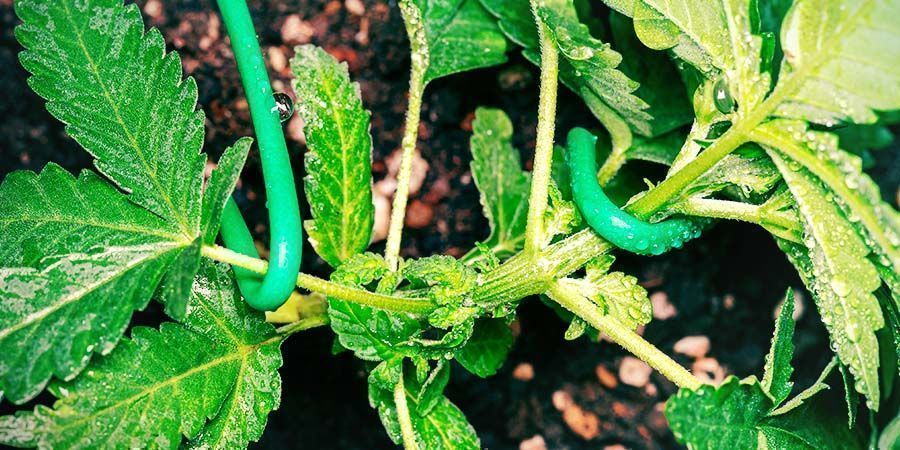
TOPPING AND FIMMING
Both topping and fimming remove plant material in order to produce a bushier plant with more flower sites, closer to the light source.
Topping involves fully removing new growth at the crown, and later on the side branches. The two branches below the cut will grow longer to form main flowers, and lower branches can catch up to be closer to the canopy. Topping side branches does the same thing to create a bush rather than the traditional Christmas tree silhouette.
Where topping removes all the new growth at the tip, fimming (Fuck, I Missed) cuts the new growth tips in half. This slows new growth as there is less leaf matter to absorb light, which allows branches below to grow longer and closer to the canopy.
MAINLINING
If you just want to grow big buds only with no secondary or popcorn buds, mainlining may be for you. Plants are topped a number of times to create a number of main branches. Topping three times will produce 8 main branches (4 times = 16, 5 times = 32), which are tied down and kept well spaced. Any new growth below the primary bud sites is removed (called undershucking), so the plant concentrates all its energy into producing large colas only.
When performed outdoors, mainlining ends up producing plants with extensive canopies, with all leaf and flower growth removed inside the plant. Plants only produce large, well-spaced colas in the canopy and no secondary growth, which makes harvest and trimming a comparative breeze.
DEFOLIATION
Certainly the most controversial high-stress training method that varies in intensity from grower to grower. Defoliation involves removing leaves at least once during veg, and then once or a number of times during early flowering. Large fan leaves are removed during vegetation to encourage stronger growth throughout the plant. Then, more large leaves are removed just before the 12-12 flowering light switch, then again in the early weeks of flowering. During the explosive flowering stretch, the plant responds by producing more calyxes to make up for loss of photosynthesis ability.
Indoors and outdoors, training the cannabis plant gets very satisfactory results. Bud quality is improved, with fewer-to-no substandard nuggets. Grow spaces are made more efficient by producing more bud per watt of better weed. It is doubtful any high-quality contemporary cannabis is left to grow naturally, instead being subjected to one or a combination of training techniques to improve plant performance and increase yields. High or low-stress training brings out the best in cannabis plants.
-
 4 min
4 March 2025
Top 5 high yielding autoflowering strains
Looking for high-yielding autoflowering cannabis strains? You're in the right place! Autoflowers are easy to grow, fast, and as potent as their photoperiod counterparts. In this article, we...
4 min
4 March 2025
Top 5 high yielding autoflowering strains
Looking for high-yielding autoflowering cannabis strains? You're in the right place! Autoflowers are easy to grow, fast, and as potent as their photoperiod counterparts. In this article, we...
-
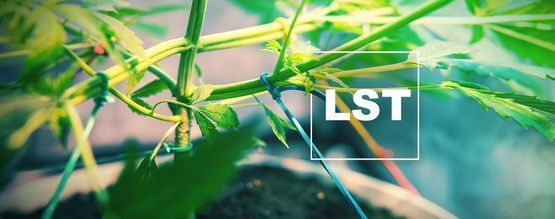 7 min
16 February 2021
How And When To Low Stress Train Cannabis Plants
Low stress training, or LST, is a training method that involves bending and tying stems and branches to encourage more efficient and productive growth from cannabis plants. Here's how to do it.
7 min
16 February 2021
How And When To Low Stress Train Cannabis Plants
Low stress training, or LST, is a training method that involves bending and tying stems and branches to encourage more efficient and productive growth from cannabis plants. Here's how to do it.
-
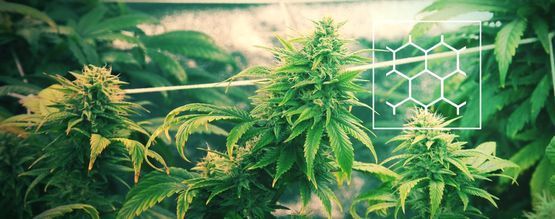 3 min
29 May 2019
Cropping Cannabis ScrOG Style
Every weed grower from professional warehouse cultivators to closet home growers can and should ScrOG for maximum yield of top-shelf colas. By the end of this grow guide, you too will be equipped...
3 min
29 May 2019
Cropping Cannabis ScrOG Style
Every weed grower from professional warehouse cultivators to closet home growers can and should ScrOG for maximum yield of top-shelf colas. By the end of this grow guide, you too will be equipped...
-
 4 min
24 November 2018
How To Grow Short And Compact Cannabis Plants
Indoor growers often don’t have the room for great big weed trees. The good news is, you can still grow successfully in confined spaces if you can control the height of your cannabis plants. In...
4 min
24 November 2018
How To Grow Short And Compact Cannabis Plants
Indoor growers often don’t have the room for great big weed trees. The good news is, you can still grow successfully in confined spaces if you can control the height of your cannabis plants. In...
-
 4 min
10 April 2018
5 Ways To Increase Cannabis Yields
Increasing cannabis yields is of paramount importantance to all growers. With our 5 simple methods even tiny gardens of just one or two cannabis plants can produce a heavy harvest.
4 min
10 April 2018
5 Ways To Increase Cannabis Yields
Increasing cannabis yields is of paramount importantance to all growers. With our 5 simple methods even tiny gardens of just one or two cannabis plants can produce a heavy harvest.
-
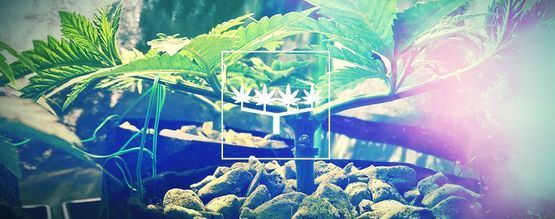 5 min
9 March 2018
Main-lining Cannabis: Everything You Need To Know
Main-lining is a cannabis growing technique gaining a lot of popularity among modern cultivators. It is a great way to increase yields and is an ideal method for smaller spaces.
5 min
9 March 2018
Main-lining Cannabis: Everything You Need To Know
Main-lining is a cannabis growing technique gaining a lot of popularity among modern cultivators. It is a great way to increase yields and is an ideal method for smaller spaces.













 United States
United States










